
 David Eggleston Hacking Up the King BOSTON 2014 David Eggleston All rights reserved. No part of this book may be reproduced or transmitted in any form by any means, electronic or mechanical, including photocopying, recording, or by an information storage and retrieval system, without written permission from the Publisher. Publisher: Mongoose Press 1005 Boylston Street, Suite 324 Newton Highlands, MA 02461 www.MongoosePress.com ISBN: 978-1-936277-56-8 Library of Congress Control Number: 2014932108 Distributed to the trade by National Book Network 800-462-6420 For all other sales inquiries please contact the Publisher. Layout: Stanislav Makarov Editor: Jorge Amador Cover Design: Al Dianov Printed in the United States of America First English edition 0 9 8 7 6 5 4 3 2 1 I would like to thank my parents Ian and Janet and my brother Thomas for all their support and encouragement during my years in chess. Many thanks are also due to Norman Stephenson for his many hours of coaching and his help in proofreading and editing the manuscript. Contents Introduction Ihope that reading Hacking Up the King will help you to develop your chess-playing skills, especially the skills of calculation and analysis.
David Eggleston Hacking Up the King BOSTON 2014 David Eggleston All rights reserved. No part of this book may be reproduced or transmitted in any form by any means, electronic or mechanical, including photocopying, recording, or by an information storage and retrieval system, without written permission from the Publisher. Publisher: Mongoose Press 1005 Boylston Street, Suite 324 Newton Highlands, MA 02461 www.MongoosePress.com ISBN: 978-1-936277-56-8 Library of Congress Control Number: 2014932108 Distributed to the trade by National Book Network 800-462-6420 For all other sales inquiries please contact the Publisher. Layout: Stanislav Makarov Editor: Jorge Amador Cover Design: Al Dianov Printed in the United States of America First English edition 0 9 8 7 6 5 4 3 2 1 I would like to thank my parents Ian and Janet and my brother Thomas for all their support and encouragement during my years in chess. Many thanks are also due to Norman Stephenson for his many hours of coaching and his help in proofreading and editing the manuscript. Contents Introduction Ihope that reading Hacking Up the King will help you to develop your chess-playing skills, especially the skills of calculation and analysis.
Some chess books consist mainly of short fragments of games without much exploration of possible variations. They are easy to read, often without the need to even set the positions up on a board. But, aside from being pleased with his progression through the book, how much does the reader really learn? There is only so much you can learn from a verbal explanation of a position, no matter how eloquently put, without delving deeply into the other lines that could have occurred. This is not one of those books. Apart from the first chapter, which you can consider a warm-up, all of the other chapters are very heavily annotated with comments and variations. Will it be hard work to get through a game?, I hear you ask.
The answer is a definite, Yes! But it will also be rewarding and, if you pause in complex positions to try and work out the continuations for yourself, it should vastly improve your calculation skills. I would definitely recommend playing through the games on a board. It is probably worth also having a small pocket set on hand. That way, when you reach a position where there are several continuations for a side to choose between, you can quickly store the position on the pocket set so that, after playing through the first variation, you dont find yourself unable to get back to the starting position to look at another, as you can simply refer to the position on your pocket set! Some variations arent very long and you will be able to follow the analysis in your head. Everyone will be able to do this to a greater or lesser extent, but if you find yourself getting lost often then it is time to set the position up on a board. Sometimes I ask what should be played next, when it is beneficial for you to do your own analysis before looking at mine.
Trying to work things out yourself can always be helpful, so whenever you find yourself really intrigued by a position and feel like musing over it on your own, then go ahead there doesnt need to be a prompt in the book for you to do this! So, on to the theme of the book. Trying to checkmate my opponent in the middlegame has always been my favorite part of chess, ever since I began to play the game. Since checkmate ends the contest, it can be possible to sacrifice vast amounts of material for an attack on the king because, if the attack works, the extra material doesnt matter. Sacrifices for attacks occur time and time again throughout this book. The attacks are grouped together in chapters based upon common themes. One thing all the games in every chapter have in common is that, for the attack to succeed, you need more attacking pieces than your opponent has defenders around your opponents king.
If you like, you can think of very badly placed defending pieces which block the king from escaping as counting as unintentional attackers a bit like friendly fire in a war. Most of the time, attacking very early in the game is not to be advised, as your opponent will probably be able to easily beat off your aggressive schemes. But there are exceptions, as you will learn in Chapter 10 about attacking to exploit an early lead in development. Time and time again, midway through the attack, it is when you pause in the heat of battle to bring your last piece into the attack that your opponents defenses will begin to crumble. This is a golden rule and should always be somewhere at the back of your mind. The editor might observe that, by the time I finished this book, the king could have simply died of old age rather than being hacked up.
This is a similar situation to the timid kings of countries today, who will typically live into their nineties. The kings of 500 years ago have more in common with the kings in this book, as their sense of adventure and warmongering would often lead them to being hacked up on the battlefield! Anyway, enough from me for now. Happy hacking! David Eggleston Durham, England January 2014  Chapter 1
Chapter 1 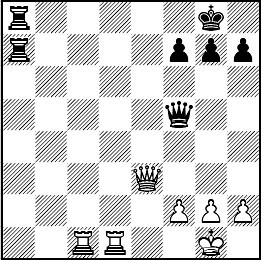
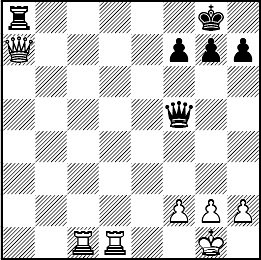 Basic Attacking Ideas Back Rank 1 It is easy to look at a well-played attacking game and think, Wow! How did he find all of those plans and ideas I could never do that myself, without realizing that there are typical attacking patterns that occur time and time again. Mastering the ability to recognize them and implement them in your own games is a key skill to develop and that is the subject of this chapter. We will start with the back-rank checkmate. From your own games, you will know that both sides usually castle to get the king to safety and that it is often advisable to avoid moving pawns in front of your king because it can damage their effectiveness in providing cover from the opponents pieces.
Basic Attacking Ideas Back Rank 1 It is easy to look at a well-played attacking game and think, Wow! How did he find all of those plans and ideas I could never do that myself, without realizing that there are typical attacking patterns that occur time and time again. Mastering the ability to recognize them and implement them in your own games is a key skill to develop and that is the subject of this chapter. We will start with the back-rank checkmate. From your own games, you will know that both sides usually castle to get the king to safety and that it is often advisable to avoid moving pawns in front of your king because it can damage their effectiveness in providing cover from the opponents pieces.
This typically leads to a situation where White will have g1, Pf2, Pg2, and Ph2 and Black will have g8, Pf7, Pg7, and Ph7 as in the following example. If a rook or queen can reach the opponents back rank in this situation without getting captured or blocked by a piece, it will be checkmate. Here, moving a rook or queen to the back rank would be unsuccessful: Black would simply capture it. This should make you think of ways to distract the black rook on a8. What other jobs does it do for Black in this position? It defends the rook on a7.  xa7 The a8-rook cant perform both tasks at the same time. d8# And White wins with the back-rank checkmate.
xa7 The a8-rook cant perform both tasks at the same time. d8# And White wins with the back-rank checkmate. 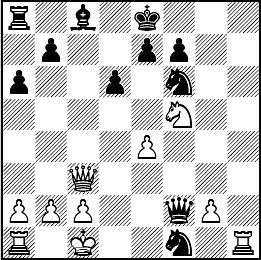
 Back Rank 2 Ryan Rhys Griffiths (2137) David Eggleston British Championship 2009 In this position, White will not succeed with 21.h8+ because after 21d7 the black king runs away and White has no further checks. 21.c7 doesnt work, either. 21.c7 doesnt work, either.
Back Rank 2 Ryan Rhys Griffiths (2137) David Eggleston British Championship 2009 In this position, White will not succeed with 21.h8+ because after 21d7 the black king runs away and White has no further checks. 21.c7 doesnt work, either. 21.c7 doesnt work, either.
Next page


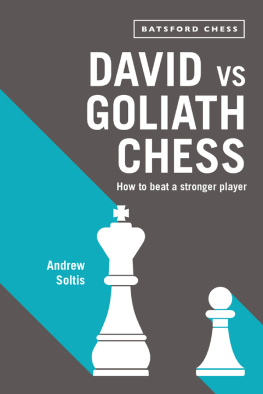

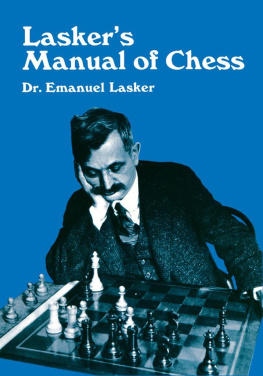

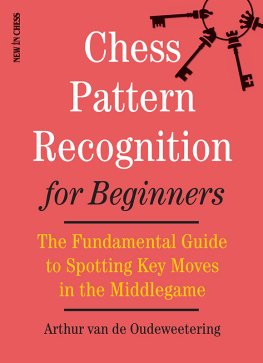
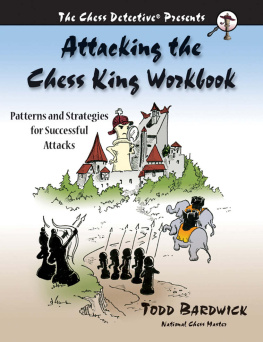
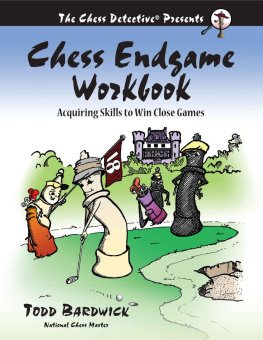


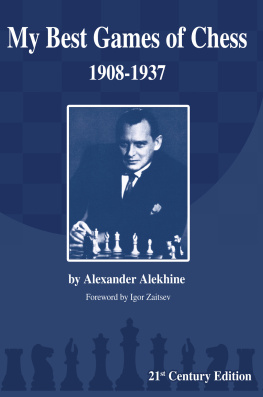
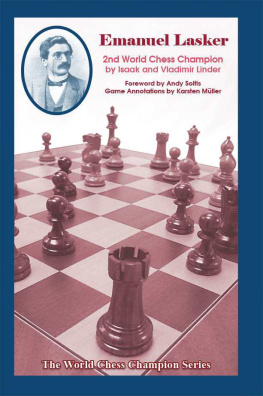

 David Eggleston Hacking Up the King BOSTON 2014 David Eggleston All rights reserved. No part of this book may be reproduced or transmitted in any form by any means, electronic or mechanical, including photocopying, recording, or by an information storage and retrieval system, without written permission from the Publisher. Publisher: Mongoose Press 1005 Boylston Street, Suite 324 Newton Highlands, MA 02461 www.MongoosePress.com ISBN: 978-1-936277-56-8 Library of Congress Control Number: 2014932108 Distributed to the trade by National Book Network 800-462-6420 For all other sales inquiries please contact the Publisher. Layout: Stanislav Makarov Editor: Jorge Amador Cover Design: Al Dianov Printed in the United States of America First English edition 0 9 8 7 6 5 4 3 2 1 I would like to thank my parents Ian and Janet and my brother Thomas for all their support and encouragement during my years in chess. Many thanks are also due to Norman Stephenson for his many hours of coaching and his help in proofreading and editing the manuscript. Contents Introduction Ihope that reading Hacking Up the King will help you to develop your chess-playing skills, especially the skills of calculation and analysis.
David Eggleston Hacking Up the King BOSTON 2014 David Eggleston All rights reserved. No part of this book may be reproduced or transmitted in any form by any means, electronic or mechanical, including photocopying, recording, or by an information storage and retrieval system, without written permission from the Publisher. Publisher: Mongoose Press 1005 Boylston Street, Suite 324 Newton Highlands, MA 02461 www.MongoosePress.com ISBN: 978-1-936277-56-8 Library of Congress Control Number: 2014932108 Distributed to the trade by National Book Network 800-462-6420 For all other sales inquiries please contact the Publisher. Layout: Stanislav Makarov Editor: Jorge Amador Cover Design: Al Dianov Printed in the United States of America First English edition 0 9 8 7 6 5 4 3 2 1 I would like to thank my parents Ian and Janet and my brother Thomas for all their support and encouragement during my years in chess. Many thanks are also due to Norman Stephenson for his many hours of coaching and his help in proofreading and editing the manuscript. Contents Introduction Ihope that reading Hacking Up the King will help you to develop your chess-playing skills, especially the skills of calculation and analysis. Chapter 1
Chapter 1 
 Basic Attacking Ideas Back Rank 1 It is easy to look at a well-played attacking game and think, Wow! How did he find all of those plans and ideas I could never do that myself, without realizing that there are typical attacking patterns that occur time and time again. Mastering the ability to recognize them and implement them in your own games is a key skill to develop and that is the subject of this chapter. We will start with the back-rank checkmate. From your own games, you will know that both sides usually castle to get the king to safety and that it is often advisable to avoid moving pawns in front of your king because it can damage their effectiveness in providing cover from the opponents pieces.
Basic Attacking Ideas Back Rank 1 It is easy to look at a well-played attacking game and think, Wow! How did he find all of those plans and ideas I could never do that myself, without realizing that there are typical attacking patterns that occur time and time again. Mastering the ability to recognize them and implement them in your own games is a key skill to develop and that is the subject of this chapter. We will start with the back-rank checkmate. From your own games, you will know that both sides usually castle to get the king to safety and that it is often advisable to avoid moving pawns in front of your king because it can damage their effectiveness in providing cover from the opponents pieces. xa7 The a8-rook cant perform both tasks at the same time. d8# And White wins with the back-rank checkmate.
xa7 The a8-rook cant perform both tasks at the same time. d8# And White wins with the back-rank checkmate. 
 Back Rank 2 Ryan Rhys Griffiths (2137) David Eggleston British Championship 2009 In this position, White will not succeed with 21.h8+ because after 21d7 the black king runs away and White has no further checks. 21.c7 doesnt work, either. 21.c7 doesnt work, either.
Back Rank 2 Ryan Rhys Griffiths (2137) David Eggleston British Championship 2009 In this position, White will not succeed with 21.h8+ because after 21d7 the black king runs away and White has no further checks. 21.c7 doesnt work, either. 21.c7 doesnt work, either.